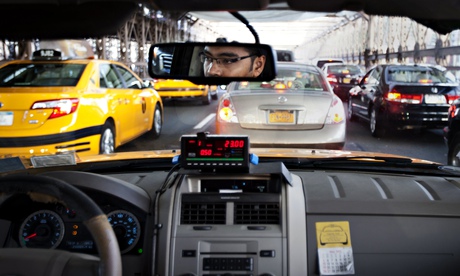
From the "gilded age" of Edith Wharton and Henry James to the rhythms of the Harlem Renaissance and Beat poets, writers have long been drawn to the east coast's biggest city. The New York Times has planned a holiday itinerary based entirely around literary landmarks, but what would be the perfect reading list to accompany a visit?
For all the heiresses and eminently acceptable suitors of the fin de siècle, the quintessential New York novel of money must surely be Fitzgerald's The Great Gatsby. It's definitely the book to read on the first approach: "Over the great bridge, with the sunlight through the girders making a constant flicker upon the moving cars, with the city rising up across the river in white heaps and sugar lumps all built with a wish out of non-olfactory money. The city seen from the Queensboro Bridge is always the city seen for the first time, in its first wild promise of all the mystery and the beauty in the world".
This is the American dream concretised in a shimmering mirage, the burgeoning metropolis of hope built on foundations of money, drugs and exploitation. (Bridges, of course, dominate the city's architecture: if you want to dazzle other tourists with sneakily memorised gobbets, try Whitman's Crossing Brooklyn Ferry; Hart Crane's The Bridge; or Russian futurist Vladimir Mayakovsky's Brooklyn Bridge.)
Another critique of consumer capitalism and the American dream, published in the same year as Gatsby, is John Dos Passos's Manhattan Transfer, the novel which preceded his great USA trilogy. Start reading the book in the centre of Times Square: it's a novel where everybody is in a constant rush (it was written at the same time as FW Taylor demanded Down with Dawdling), and Dos Passos splices the narrative with texts from the surface of the city: adverts, newspaper headlines, signposts. Accepting the Feltinelli Prize in 1967, Dos Passos recalled that when he returned to the USA after years in Europe, "New York was the first thing that struck me. It was marvellous. It was hideous. It had to be described." Descriptions of the city certainly take centre stage in Manhattan Transfer; and the characters themselves fade until they form part of the background, blurring with City so that the social is mapped onto the topological. To me, the tension between the "marvellous" and "hideous" that Dos Passos identifies is indicative; his novel may begin as a critique of mindless consumerism and social apathy, yet you can't help but feel that it ends up a little in thrall to what DH Lawrence called New York's "wild, strange frenzy for success: egoistic, individualistic success".
Towards the second half of the century, as the Beat Generation moved west from New York to San Francisco and the city suffered a more general economic decline, it became a site of radical underground artistic endeavour. As the decaying urban fabric, abandoned warehouses and gaps between buildings became de facto exhibition spaces (such as Gordon Matta-Clark's Day's End ), the city became almost a monument to its own decline. This "an-architectural" (with the intentional pun on anarchy) boom inspired a literary exploration of spaces of the city that are physically and socially marginal: Kathy Acker's short story New York City in 1979, and David Wojnarowicz's Close to the Knives: A Memoir of Disintegration (1991) are two wonderfully dark explorations of the underbelly of the city. Like Dos Passos, Acker makes use of collage techniques, and Wojnarowicz, influenced by his work as a photographer and filmmaker, processes the city by images.
And for those content to just want to wander, New York has its own tradition of flânerie. Quinn, the protagonist of Paul Auster's New York Trilogy, describes the city as "an inexhaustible space, a labyrinth of endless steps, and no matter how far he walked, no matter how well he came to know its neighborhoods and streets, it always left him with the feeling of being lost". The idea of being lost in one of the most tightly-planned cities in the world might seem odd, but it's testament to the claustrophobia of endlessly repetitive, infinitely stretching streets and avenues which reveals a consciousness particular to New York City. It has always been a curiously conflicted urban settlement: on the one hand, it is the heart of America's financial and legal systems, while on the other hand areas such as Greenwich Village and the Lower East Side have always been alternative, bohemian, even anti-establishment spaces. The most evocative story of New York's urban planning therefore is ironically one of the oldest, Herman Melville's short story Bartleby the Scrivener, published in 1853. Chiming with Thoreau's notion of civil disobedience and the Astor Place riot of 1849, Bartleby's inert but insistent protest – "I would prefer not to" – became something of a cult symbol of defiance during the recent Wall street protests.
For a panorama of 20th-century New York, though, it's hard to do better than Don DeLillo's Underworld. After all, one book is probably more than enough reading on a city break …

